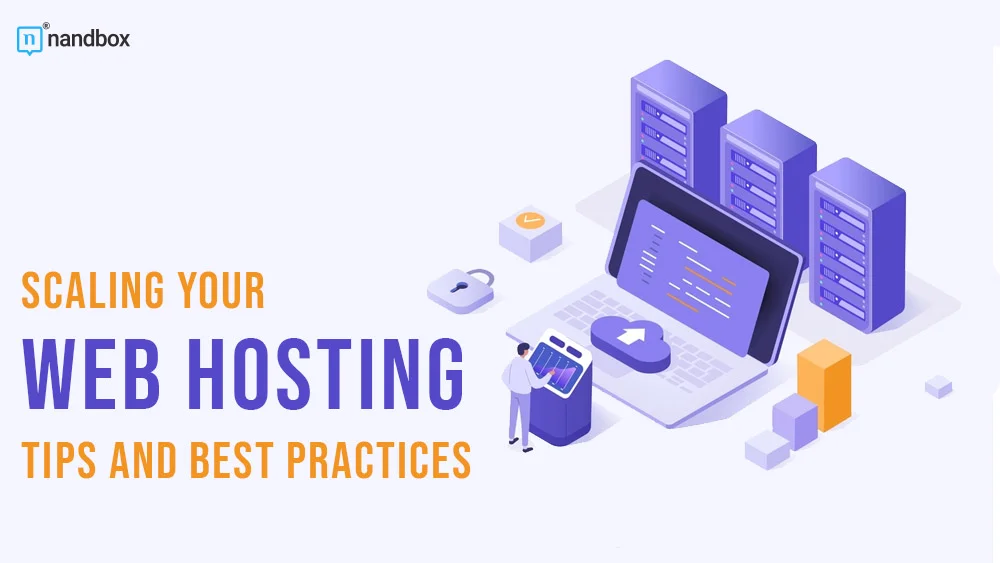As businesses expand, their websites often experience an increase in traffic. Effectively managing this growth is crucial to keeping your site fast and accessible. A key component is efficiently scaling your web hosting by using tools such as dedicated servers, which go beyond traditional hosting. This adjustment is essential whether you’re handling a spike in visitors from a marketing campaign or steady growth. Properly scaled web hosting directly impacts your website’s performance.
What is Scalability in Web Hosting?
Scalability involves adjusting your hosting capacity to handle varying amounts of network traffic effectively. This adjustment ensures optimal performance and cost-efficiency. For online businesses, scalable hosting is critical to accommodate growing audiences and maintain smooth site operations.
Evaluating Your Hosting Needs
To prepare for scaling, first assess your existing hosting resources. Monitor key metrics such as page load times, server usage, and uptime using a reliable website uptime monitoring service that instantly detects downtime. This data will help determine whether your current setup is adequate and identify necessary upgrades. Consider factors like bandwidth, storage, and CPU capacity in your evaluation.
However, keeping your website running smoothly isn’t just about choosing the right hosting plan; it’s more about understanding how your site actually performs. To give you an example, even the shortest periods of downtime or even slow-loading pages can lead to visitor frustration. That’s exactly why having a reliable website uptime monitoring service matters.
But what does this service actually do? A website uptime monitoring service can help you track your website 24/7 easily and even get notified if something goes wrong. For example, it can detect a server issue, high load times, or unexpected downtime. This can help you detect problems early, fix them before they affect your website visitors, and most importantly, this service will help you make smarter decisions.
Website uptime monitoring services don’t only help you detect problems; they also give you valuable insights. You can easily track when traffic is higher, which pages are slower than others, and how your hosting handles extra visitors. This makes it easier for you to plan updates and fix issues before they cause errors. By tracking your website’s health, you can ensure a smooth experience for your visitors.
Additionally, it’s important to anticipate future growth when evaluating your hosting needs. Look at historical traffic patterns and consider upcoming events or campaigns that may drive more visitors to your site. Partnering with a reliable provider of web hosting services can provide the expertise and resources needed to manage this growth effectively. By planning ahead, you can avoid the need for frequent scaling adjustments and ensure that your hosting infrastructure is prepared to handle both current and projected traffic levels. When evaluating, ensure your website design web is optimized for performance to help reduce server load and improve scalability.
When to Scale Your Hosting
Timing is crucial in scaling decisions. Indicators such as slower load times or increased bounce rates suggest that your current configuration may be insufficient. Scaling too soon can lead to overspending while scaling too late might damage user experiences and decrease revenue.
Another key indicator that it’s time to scale your hosting is when you start seeing a significant increase in your website’s response times. Slow-loading pages can frustrate users and negatively impact your search engine rankings. If you notice that your pages are taking longer to load despite optimizations on your end, it may be a sign that your hosting resources are being stretched thin and it’s time to consider scaling up.
Scaling Options
Several scaling options are available. You might simply upgrade your existing plan for immediate improvements. For ongoing growth, consider moving from shared to more extensive options like Virtual Private Servers (VPS) or dedicated servers. Cloud hosting also offers flexible scaling based on real-time demands.
When choosing a scaling option, it’s important to consider your budget and the level of control you require over your hosting environment. Shared hosting plans are often the most affordable, but they offer limited resources and control. VPS and semi dedicated hosting provide more resources and customization options, but they also come with a higher price tag. Cloud hosting can be a good middle-ground, offering scalability and flexibility at a reasonable cost.
Best Practices for Scaling
To ensure a smooth transition, plan to scale during low-traffic periods and secure a full data backup to avoid loss. Communicate with your hosting provider about scalable packages and anticipated downtimes. Pre-testing the new setup under expected loads can prevent future issues.
In addition to planning your scaling during low-traffic periods and securing data backups, it’s also crucial to test your new hosting setup thoroughly before making the switch. This includes testing your website’s functionality, speed and performance under simulated traffic loads. By identifying and addressing any issues before going live with your scaled hosting, you can minimize the risk of downtime or performance problems.
Post-Scaling Monitoring and Optimization
After scaling, continuous monitoring is essential to verify that the new setup meets your needs. Use performance monitoring tools and be ready to make further adjustments. Regular updates to your website’s infrastructure can also enhance performance and sustain the benefits of your scaling efforts.
Effective scalability practices are vital for maintaining optimal performance and user satisfaction as your business grows. By assessing your needs, choosing appropriate scaling options and continually monitoring your setup, you can support both current and future traffic increases seamlessly.
As part of your ongoing monitoring and optimization efforts, it’s also a good idea to regularly review your hosting plan and resource usage. As your website grows and evolves, your hosting needs may change over time. By periodically assessing your resource consumption and traffic patterns, you can make informed decisions about when to scale your hosting further or potentially even scale down if you find that you have excess capacity.




